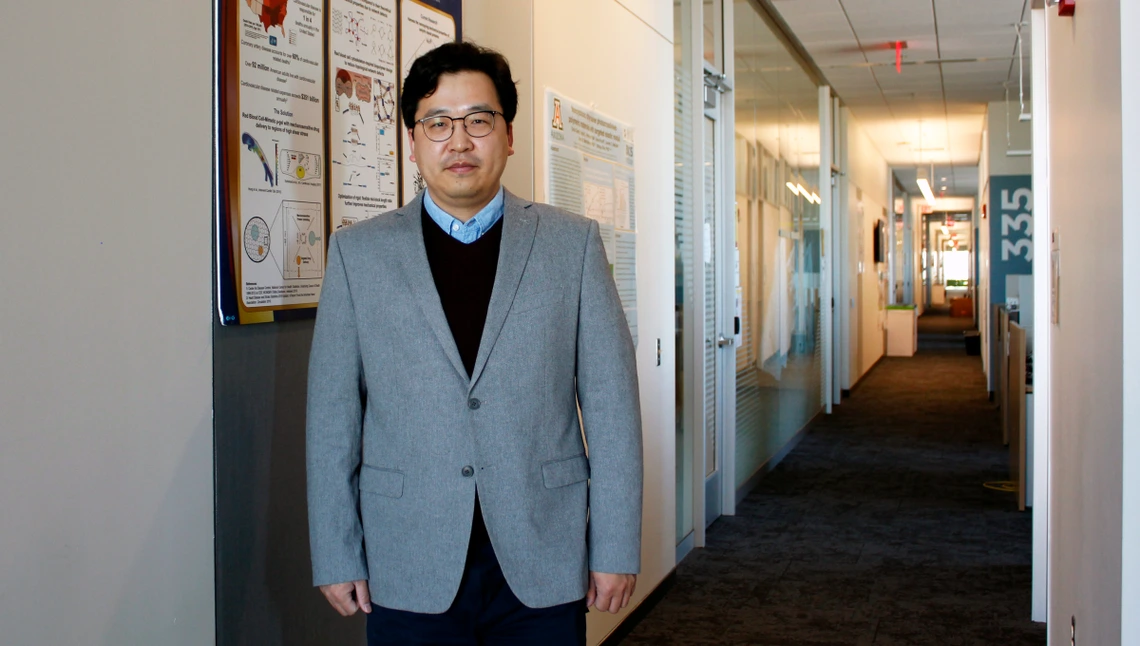Kim Discusses Using Biomimicry to 'Design the Future'

Biomimicry, or designing structures and even entire systems with inspiration from nature, is all around us: aircraft design, insulation, office buildings. But University of Arizona scientists are taking the concept further and are using nature to inspire entirely new technologies. The Arizona Republic recently spoke with multiple scientists and engineers who are using cutting-edge examples of biomimicry.
MSE assistant professor Minkyu Kim plans to mimic red blood cells by making his own versions that can be used to deliver medications to specific parts of the body. To support this work, Kim earned a $600,000 CAREER Award, the National Science Foundation’s most prestigious award in support of early-career faculty. He says the idea stemmed from his curiosity about the red blood cells themselves.
“They are flexible and they have very special geometry, and then they can be stretchable if there are external forces, and they are reversible if those external forces were removed,” Kim said. “I'm just trying to mimic (what) the red blood cell looks like.”
Red blood cells can also stay in the body much longer than typical drug delivery vehicles.
“Right now, the fate of drug delivery vehicles is up to four weeks, maximum,” Kim said. “My goal is for these microparticles to reach the lifespan of a red blood cell, which is about four months. And eventually, I hope, even longer.”
